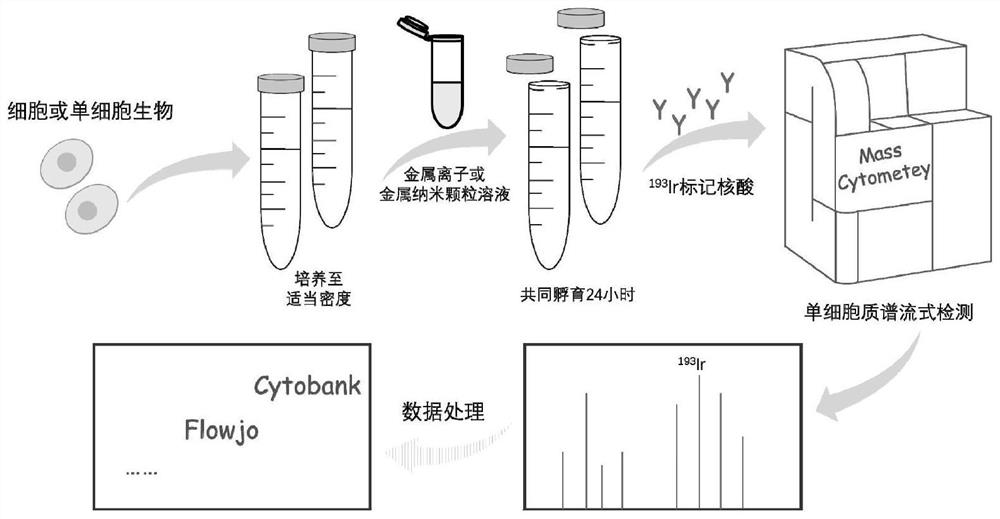High-throughput detection method for metal ions and metal nanoparticles based on single cell enrichment and single cell mass spectrometry
A single-cell and cell-based technology, applied in the field of high-throughput detection, can solve problems such as high detection limit, consumption of 100mL algae solution, and complex processing
- Summary
- Abstract
- Description
- Claims
- Application Information
AI Technical Summary
Problems solved by technology
Method used
Image
Examples
Embodiment 1
[0109] Embodiment 1, the detection of trace metal ions or metal nanoparticles of the present invention
[0110] 1. Culture of Tetrahymena thermophila
[0111] Thermophila Tetrahymena B2086, inoculated into 5 mL SPP medium at 3000 cells / mL, cultured in a shaker at 28 °C and 135 rpm / min for 24 h, until the cell density increased to 2×10 5 cells / mL or so. The formula of SPP medium is: add 20g to 1L deionized water Peptone, 2g glucose, 1g yeast extract, 0.03g ferric citrate, sterilized at 120°C for 20min, and then added 1% (v / v) double antibody.
[0112] 2. Metal or metal nanoparticle exposure
[0113] Gold nanoparticles (AuNPs, diameter, 5nm), stock solution 1g / L, serially diluted to 100ng / L, 500ng / L, 1μg / L, 5μg / L, 10μg / L working solution. Take 2 mL of the above-mentioned Tetrahymena suspension, add 20 μL of the above-mentioned working solution respectively, and expose Tetrahymena to 1, 5, 10, 50 or 100 ng / L of gold nanoparticles (AuNPs, diameter, 5 nm) respectively, and add...
PUM
 Login to View More
Login to View More Abstract
Description
Claims
Application Information
 Login to View More
Login to View More - R&D
- Intellectual Property
- Life Sciences
- Materials
- Tech Scout
- Unparalleled Data Quality
- Higher Quality Content
- 60% Fewer Hallucinations
Browse by: Latest US Patents, China's latest patents, Technical Efficacy Thesaurus, Application Domain, Technology Topic, Popular Technical Reports.
© 2025 PatSnap. All rights reserved.Legal|Privacy policy|Modern Slavery Act Transparency Statement|Sitemap|About US| Contact US: help@patsnap.com



